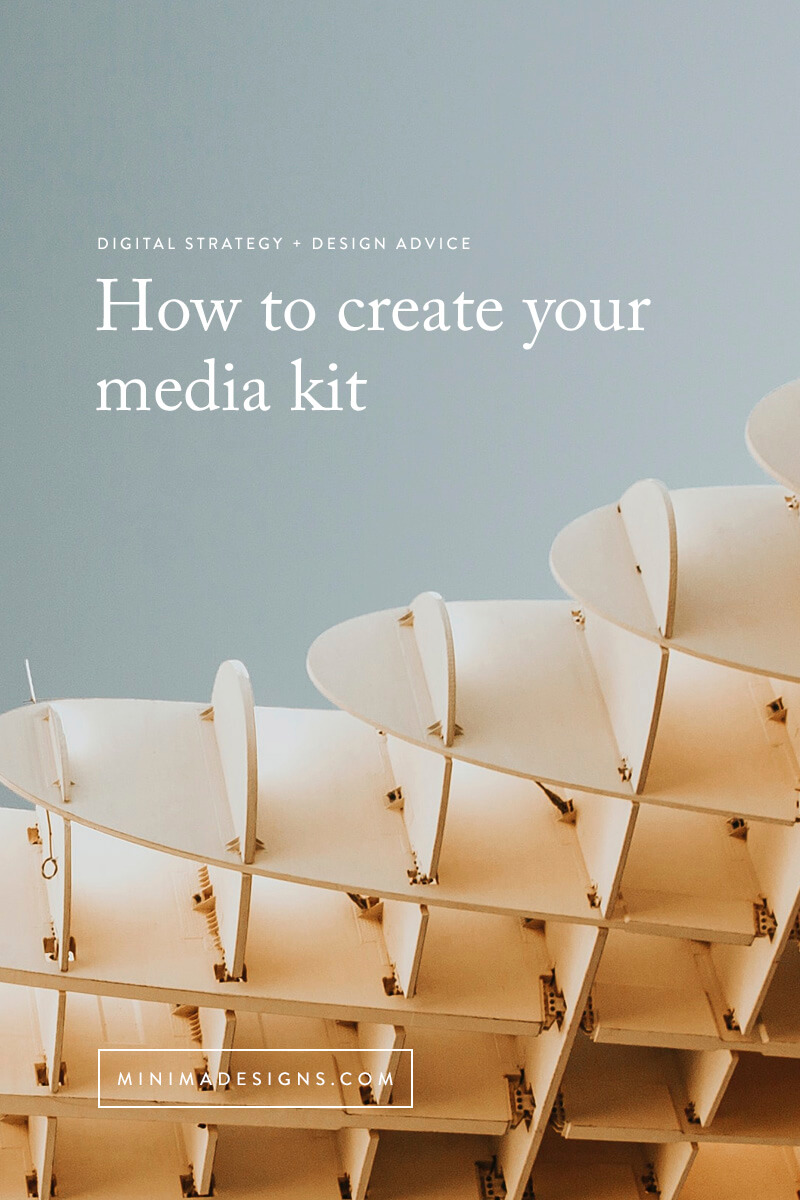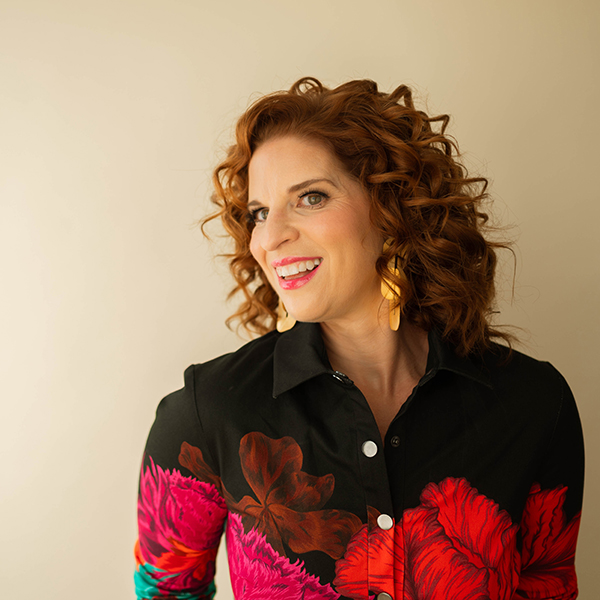
If one of your goals is to get yourself more visibility, then one of the best things you can do to prepare is create your media kit.
A media kit (or press kit) provides a professional and polished presentation with key information about your brand – it’s like a resume for your business.
- Do you want to be featured on podcasts, speak at conferences or get noticed by the press?
- Do you find yourself hustling to write a quick bio anytime someone wants info on you?
- Can you never find the right photo of you to share?
You need to create a media kit you can easily share with others. Think of it as your digital resume and calling card all in one. Having a media kit helps establish your credibility and makes it super easy for people to share your information.
Take a couple of hours and get this stuff together – it will make your life so much easier to have this all in one place. And it makes it SUPER easy for people who want to feature you as a speaker, interview you for podcasts or feature you in their digital publications.
What is a media kit?
A media kit contains relevant and promotional information about you and your business. This helps people like conference creators, podcasts hosts, influencers, writers, and journalists can get a quick overview of who you are and what you have to offer. It also allows them to quickly share your info with their audience.
As someone who has put together a number of virtual conferences and online events, I can’t tell you how annoying it is to have to hunt for usable photos, bios and links for featured speakers when they don’t have them easily available on their site (and you probably don’t want someone grabbing a random photo from your Instagram feed).
Where should you keep your media kit?
I’m a big fan of making your media kit easy to find on your site. I recommend either putting the info on your about page or creating a separate page called media kit. Pro tip: I’ll often include a link to the media kit in the footer navigation of a web site so it’s easy to find.
I also recommend creating a dropbox or google drive folder with images and graphics that you can share with others. You might also consider creating a 1-2 page .pdf with relevant copy that you can easily send via email. Typically this .pdf will include photos, bio and an overview of your various offerings and social media channel reach. If you’re an influencer or offering brand deals, you may decide to include your standard rates inside as well (although I recommend you keep those separate from your kit and only sent to prospective clients once you’re in negotiations).
What should you include in your media kit?
The following is a guide of items that CAN be included in your kit – if you don’t have everything on the list, that’s ok. You may need to ask your designers, photographers or assistants for certain files.
- High resolution photos
If you’re just getting started, I highly recommend having at least one great portrait headshot. It’s ideal if you can have a few different photo options so they can be used in a wide variety of applications like your website, business cards and social media profiles. Everyone uses different sized graphics and will have different branding aesthetics – that’s why it’s great if you’ve got several landscape (horizontal) and portrait (vertical) oriented images shot on white or light backgrounds.While images of you in front a graffiti wall or in an exotic locale can be a fun “extra” image in your kit – it can be really hard to use that photo for a speaking event or on a flyer with a bunch of other images. Make it easy for the designers out there who are putting together graphics for events and podcasts!
I also recommend having “preview” images on your media kit page that give the option for the user to download high-resolution versions suitable for print publications (I usually store these large file images on dropbox). You can see how this is done on Laura Belgray’s media kit page.
- Short version of your bio
This should be no more than one paragraph – hit all of your highlights but keep the writing tight and concise. Think presentation bio / blurb of a book jacket. Include your website and major wins. - Podcast version of your bio
This can be longer – 200-300 words or so. You may want to have a “corporate” version and a “fun” version of your bio depending on your industry and outreach. - Full bio
This is the longest version of your bio. You can go into a bit more depth and detail your education, publications, inspiration, achievements and success stories. - Industry / event specific bio
You may want to alter your bio to better reflect the space where it will be used – consider what parts of your bio will be most relevant for the audience – and add a line or two that references the event or community. - Speaker topics and featured events
If you’re known for certain topics, make a list – it’s easy for someone to scan and see if you’d be a fit for their program. Ann Handley is an amazing keynote speaker and you can see her speaking page here. Also consider listing important conferences and events where you’ve spoken. - Social media accounts
List the platforms where you are active (Threads, Facebook, LinkedIn, Youtube, Instagram, Pinterest etc.) You can include follower numbers and subscribers (certain promoters will look for this info before they’ll hire or feature you). - Link to video demo reel
If you have video of you in action, this can be a great addition to the kit – especially if you’re a dynamic speaker or looking to get hired for your presence. Keep the clip short – no more than 2-5 minutes. - Link to audio files
Been on podcasts? Share the links – if possible, add an audio player so people can instantly hear your voice. - Vector version of your logo
If you had a logo designed, you should have a vector version. You will use this version for all print materials (including business cards). The format will likely be .eps, .ai or .pdf – make sure you get this from your designer. You can store this in your dropbox folder if you don’t want to post it on your site. - Statistics
Consider adding number of clients / students served and business impact. - Testimonials/praise from clients and customers
Social proof is always welcomed – especially if you’ve got a quote from someone notable in your industry or a celebrity. Highlight important case studies, partnerships and collaborations. - Press mentions
Have you been featured in a newspaper, magazine, blog, tv, or other media outlet? Show screenshots and links to article mentions. Website mentions often disappear into the ether – make sure to grab a screenshot of the article for your records! - Contact info
Make sure it’s easy to contact you – list an email address or way to get ahold of you. - Rate Sheet
Want to offer your services as a speaker, influencer or featured presenter? Create a rate sheet with prices for your speaking and promotional rates. Canva has simple templates you can use (search the phrase “rate sheet” or “influencer card” for examples). Save it out as a pdf so you can email it out easily.
Media Kit Examples
Michelle Martello’s kit
Laura Belgray’s kit
Elena Brower’s media kit
Ann Handley’s Kit for Planners


 Michelle Martello is a Kajabi and ConvertKit (Kit) expert, award-winning digital strategist, and founder of Minima Designs. She works with entrepreneurs and creators to launch, grow, and streamline their online businesses — from creating all kinds of digital products and programs to email marketing and automation. Michelle offers 1:1 strategy consults for anyone looking to simplify the tech and build a business that actually works (and lasts).
Michelle Martello is a Kajabi and ConvertKit (Kit) expert, award-winning digital strategist, and founder of Minima Designs. She works with entrepreneurs and creators to launch, grow, and streamline their online businesses — from creating all kinds of digital products and programs to email marketing and automation. Michelle offers 1:1 strategy consults for anyone looking to simplify the tech and build a business that actually works (and lasts).
Great list! Thanks for sharing.
What a great resource! I’ve just been thinking about what to collect for a media kit, and had not considered using Dropbox – great idea. Thanks, Michelle.
This is super helpful, Michelle. Thank you! I’ll be referring back when I put together my media kit.
Glad you enjoyed it Alison!
Ditto! Thank you, Michelle!